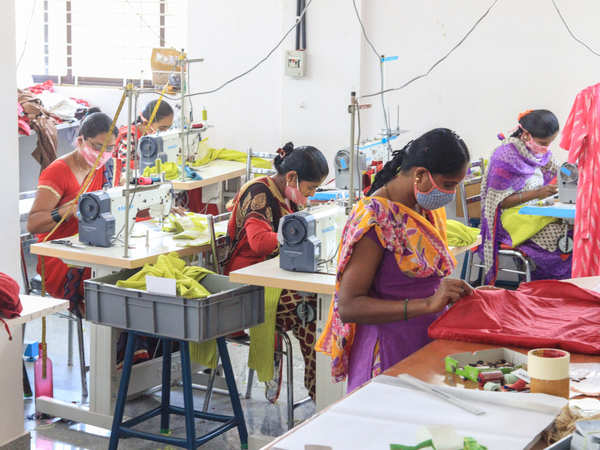Tailor Perth Insights: Discover the Art of Fine Tailoring in Perth
Tailor Perth Insights: Discover the Art of Fine Tailoring in Perth
Blog Article
Comprehending the Tailoring Process: From Fabric Selection to Final Suitable for the Perfect Closet
The customizing process is a complicated interplay of art and science, starting with the critical choice of material choice and culminating in the precise changes of last fittings. Each fabric kind brings one-of-a-kind high qualities that influence not only the visual charm however additionally the garment's longevity and viability for various celebrations. Recognizing the nuances of tailoring techniques can elevate one's closet to extraordinary levels of sophistication. As we discover these aspects even more, one must take into consideration exactly how even the tiniest details can considerably influence the general outcome of one's individual design.
Importance of Material Option
Choosing the appropriate fabric is vital in the tailoring process, as it straight influences the convenience, resilience, and total aesthetic of the final garment (tailor perth). The option of fabric sets the foundation for the garment's efficiency, style, and capability. Various textiles possess unique residential or commercial properties, such as breathability, stretch, and weight, which can substantially influence just how the garment drapes and fits the body
In addition, textile selection influences the garment's long life and simplicity of treatment. Top notch materials can stand up to deterioration, preserving their appearance and structure over time, while lower-quality products might cause pilling or fading. In addition, the ideal material contributes to the garment's capability to transition across periods and celebrations, consequently improving adaptability.
A customized piece made from a suitable fabric not just showcases workmanship however also boosts the user's confidence. Consequently, recognizing the subtleties of fabric selection is extremely important for any kind of tailoring endeavor. It guarantees that the last item not just meets the visual wishes of the client yet likewise aligns with useful demands, thereby attaining an unified balance in between form and feature in the tailored closet.
Sorts Of Fabrics and Their Uses
Understanding the different sorts of textiles available is essential for making notified decisions throughout the tailoring process. Each textile has special features that dictate its viability for details garments and celebrations.
Its adaptability permits it to be customized into everything from tee shirts to gowns. Its all-natural flexibility aids garments maintain shape over time.
Silk radiates deluxe and is light-weight, making it excellent for eveningwear and delicate blouses; however, it requires careful handling because of its frailty. Linen, with its textured surface, is a prominent option for cozy environments, supplying a airy and crisp feel, however it wrinkles conveniently, which may affect the garment's look.
Artificial fabrics, such as polyester and nylon, offer longevity and resistance to wrinkles, making them appropriate for day-to-day wear and energetic garments. Comprehending these material types and their residential or commercial properties enables for better decision-making, making sure that each tailored piece not only fits well yet additionally straightens with the designated function and event.
The Tailoring Techniques Explained
The art of customizing depends on a selection of techniques that change textile into well-fitted garments. Central to this procedure is pattern composing, where a dressmaker creates templates based upon the client's dimensions and wanted design. This preliminary step guarantees that the garment will certainly fit the user appropriately websites before any kind of reducing occurs.
As soon as patterns are developed, cutting strategies enter into play. Precision is extremely important as mistakes can result in misfitting garments. Tailors commonly utilize numerous cutting approaches, such as single-layer cutting for intricate layouts and multiple-layer cutting for performance on conventional patterns.
Basting is another crucial method, allowing dressmakers to temporarily sew fabric items together for an initial fitting. This technique offers the chance to assess the drape and general silhouette prior to last stitching.
Seaming strategies, including flat-felled seams and French seams, enhance the garment's sturdiness and aesthetic allure. Tailors likewise use methods such as interfacing and extra padding to supply framework and shape to certain areas, like collars and shoulders.
Finally, ending up methods, including hemming and edge finishing, guarantee the garment's durability while offering a sleek appearance. Together, these strategies form the backbone of efficient tailoring, leading to charming, tailor-made garments.
Suitable Modifications and Considerations

Trick considerations include the shoulder fit, which must neither droop nor limit activity, and the sleeve length, which need to permit comfy arm movement while keeping a refined look. Additionally, adjustments at the waist can improve the silhouette, with choices to allow out or take in fabric as needed.
The increase of pants is another critical factor; it must sit easily over the hips without causing pain, enabling simplicity of motion. Hemming sizes for both pants and skirts ought to mirror the wearer's preferred style while respecting percentages.

Keeping Your Tailored Attire
Constantly follow the treatment tag guidelines, which may suggest dry cleansing for fragile materials or device cleaning for even more long lasting products. Stay clear of constant laundering, as this can wear down the textile and modify the garment's shape.
Storage space is equally essential; use cushioned wall mounts for coats and layers to preserve shoulder structure, and store trousers folded up nicely or hung to avoid creasing. Protect garments from straight sunlight, which can discolor colors and damage fibers.
Additionally, routine assessments for minor repair work can protect against larger issues. Look for loosened switches, fraying seams, or signs of moth damage, resolving these troubles quickly to preserve the garment's integrity.
Last but not least, take into consideration seasonal rotation. Using customized items in small amounts permits textiles to recoup, expanding their life-span. By applying these maintenance methods, you can make sure that your customized garments continue to be as beautiful as the day you initially used them, improving your optimal wardrobe for several years ahead.
Verdict
The tailoring process, encompassing fabric choice, proficient methods, and accurate suitable adjustments, plays a crucial duty in creating garments that boost both comfort and style. Each stage adds to the general performance of the last product, guaranteeing that clothes not just fits well yet also mirrors specific identification. Additionally, recognizing the value of upkeep expands the life of tailored garments, strengthening their worth in a well-curated closet. A comprehensive technique to customizing culminates in a refined and confident look.
Choosing the ideal fabric is critical in the tailoring process, as it directly influences the convenience, resilience, and overall visual of the last garment. The option of fabric sets the foundation for the garment's performance, performance, and style. Different materials possess special residential or commercial properties, such as weight, breathability, and stretch, which can significantly affect exactly how the garment drapes and fits the body.
The art of customizing depends on a variety of methods that change fabric right into well-fitted garments.The customizing procedure, including material selection, skilled methods, and specific fitting modifications, plays a critical function in producing garments that improve both visit site convenience and style.
Report this page